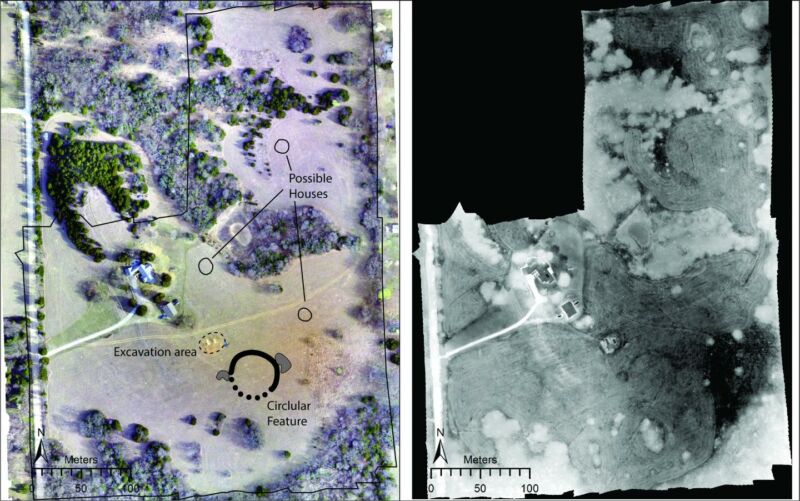Archaeologists with drones discover pre-Columbian earthworks in Kansas

Enlarge / On the left, the newly discovered earthwork and a few possible houses are marked on an aerial image of the site. On the left, you can see the outline of the circular earthwork in the thermal image.
It's hard to imagine monumental archaeological sites still lying undiscovered beneath the fields of Kansas. But a drone survey just revealed the eroded remains of a wide ditch that once encircled a 2,000 square meter (21,000 square feet) area on a bluff overlooking the Walnut River. Filled in by 400 years of erosion and covered by topsoil and grass, the pre-Columbian earthwork shows up in thermal imaging but is otherwise nearly invisible from above.
Our findings demonstrate that undiscovered monumental earthworks may still exist in the Great Plains," said Dartmouth College archaeologist Jesse Casana. You just need a different archaeological approach to recognize them."
The newly rediscovered earthwork is part of a cluster of archaeological sites in the area, which was once home to the ancestors of the Wichita people. Those sites, abandoned for centuries and lost beneath cattle pastures and farms, may have been Etzanoa, the Great Settlement" described by the conquistador Juan de Onate, who marched a force through the area in 1601.
Read 19 remaining paragraphs | Comments